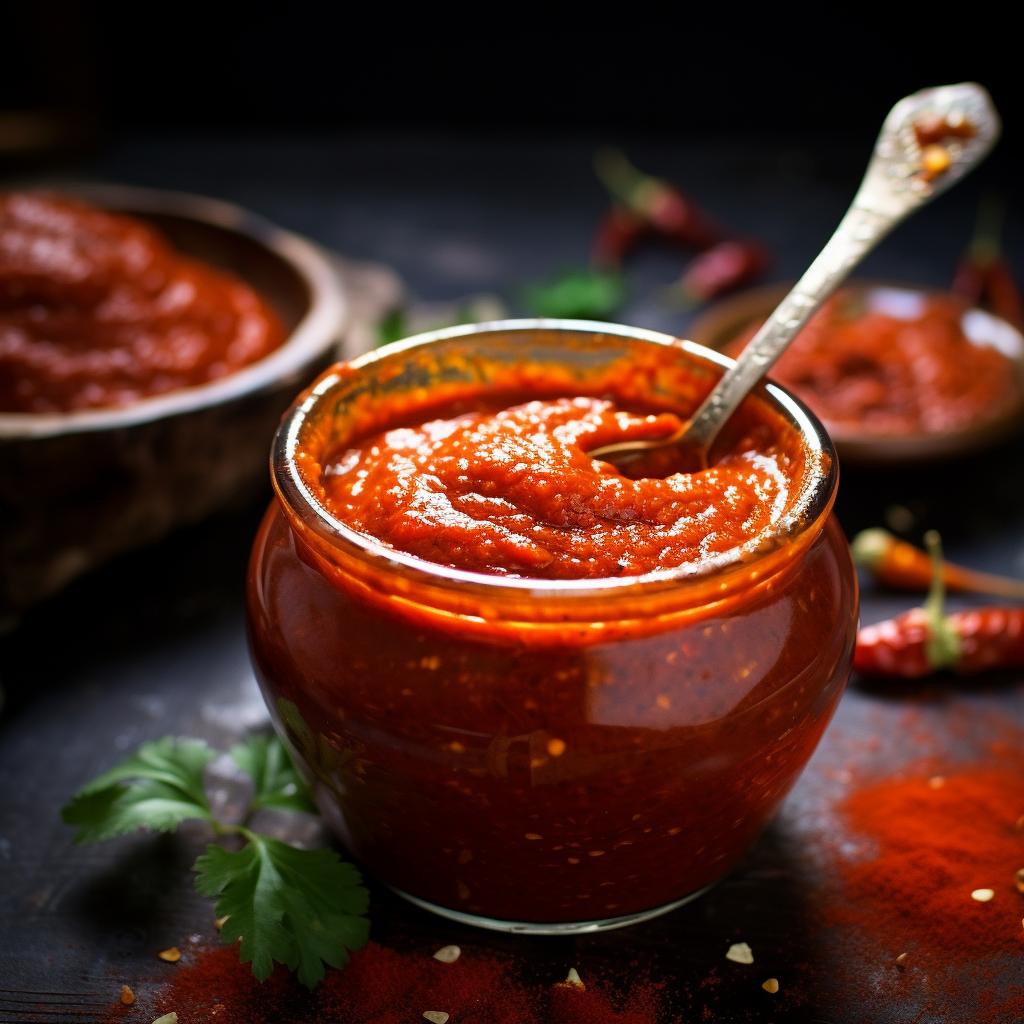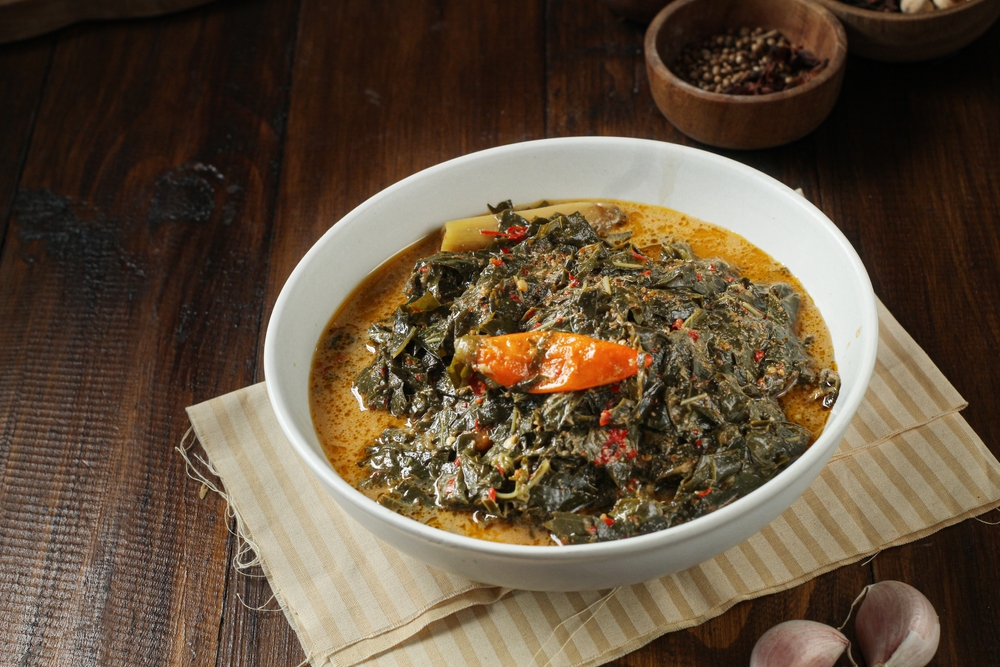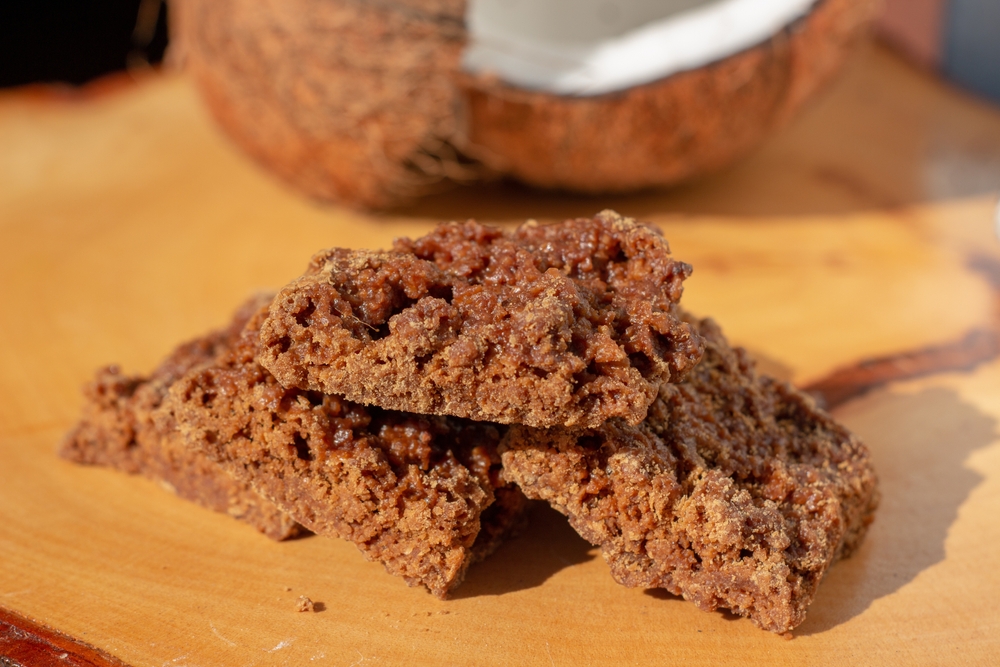Welcome to a culinary journey through the vibrant and diverse flavors of Cameroonian cuisine. Nestled in the heart of Central Africa, Cameroon is a country known for its rich cultural heritage and delectable dishes. From hearty stews to mouthwatering grilled seafood, Cameroonian cuisine is a symphony of flavors that will leave your taste buds dancing.
In this blog post, we will explore some of the most iconic dishes that define Cameroonian gastronomy. Get ready to tantalize your senses as we delve into the traditional ingredients, preparation methods, and cultural significance of these culinary delights. Whether you’re a food enthusiast or simply curious about exploring new flavors, Cameroonian cuisine offers a unique and unforgettable experience.
We will begin our culinary adventure with the national dish of Cameroon, Ndolé. This hearty and flavorful dish showcases the diverse array of ingredients found in Cameroonian cooking. From there, we will explore the staple food of the country, Fufu, and its regional variations and accompaniments.
No exploration of Cameroonian cuisine would be complete without diving into the world of grilled fish and seafood. With its coastal influences and diverse preparation methods, this section will highlight the vibrant flavors that come from the waters surrounding Cameroon.
But it’s not just the main courses that make Cameroonian cuisine stand out. We will also take a stroll through the streets of Cameroon to discover the delightful world of street foods, including mouthwatering beignets and skewered delights.
For the adventurous foodies, we will venture into the jungle to uncover the unique and wild experience of consuming bushmeat and edible insects. We will discuss the traditions, preparations, and ethical considerations that surround these delicacies.
To quench your thirst, we will explore the beverage culture of Cameroon, from the traditional palm wine to the vibrant coffee and tea cultures. And of course, we can’t forget about the sweet tooth! We will indulge in the delectable world of Cameroonian sweets and desserts, including the famous bean cake, Koki, and tropical fruit delicacies.
Throughout our exploration, we will also touch upon the various influences and fusion that have shaped Cameroonian cuisine, from French culinary traditions to Bantu and indigenous contributions. We will explore how these influences have merged with local flavors to create a truly unique culinary experience.
So, get ready to embark on a gastronomic adventure through the flavors of Cameroon. Whether you’re a seasoned foodie or simply looking to expand your culinary horizons, Cameroonian cuisine offers a delightful melody of Central African flavors that is sure to leave you craving for more.
Ndolé: The National Dish
Ndolé: The National Dish
Prepare to immerse yourself in the flavors of Cameroon’s national dish, Ndolé. This iconic dish is a true representation of the country’s culinary heritage and is beloved by locals and visitors alike. In this section, we will delve into the traditional ingredients, preparation methods, variations, serving occasions, and pairings of Ndolé.
Traditional Ingredients and Preparation
Ndolé is primarily made from bitterleaf greens, which give the dish its distinct flavor. Other key ingredients include groundnuts (peanuts), crayfish, palm oil, and a variety of meats such as beef, pork, or fish. The bitterleaf greens are carefully washed and then cooked to reduce their bitterness. The groundnuts are roasted and ground into a paste, adding a rich and nutty flavor to the dish. The meats are typically seasoned and cooked separately before being combined with the greens and groundnut paste.
Variations and Modern Twists
While the traditional recipe of Ndolé remains popular, there are also variations that incorporate different ingredients or preparation methods. Some versions of Ndolé include additional vegetables such as spinach or pumpkin leaves. Others may use smoked fish or shrimp instead of meat. Additionally, modern twists on Ndolé can be found in contemporary restaurants, where chefs experiment with different flavors and presentation styles.
Serving Occasions and Pairings
Ndolé is often served on special occasions and celebrations, such as weddings, birthdays, and festivals. It is a dish that brings people together and symbolizes unity and community. Ndolé is typically enjoyed with a side of boiled or steamed plantains, yams, or rice, which help to balance the flavors of the dish. It is common to find Ndolé served with a variety of protein options, allowing guests to personalize their meal.
Whether you’re savoring Ndolé at a festive gathering or enjoying it at a local restaurant, this national dish is a true representation of Cameroonian cuisine. Its unique combination of bitterleaf greens, groundnuts, and meats creates a harmonious blend of flavors that will leave you craving more. So, be sure to give Ndolé a try and experience the authentic taste of Cameroon.
Fufu: A Staple Across the Land
Fufu: A Staple Across the Land
When it comes to Cameroonian cuisine, one cannot ignore the significance of fufu. This starchy staple food is consumed across the country and is a beloved part of the culinary culture. In this section, we will delve into the regional varieties and ingredients of fufu, its accompanying soups and stews, and the cultural importance it holds in Cameroonian society.
Regional Varieties and Ingredients
Fufu comes in various regional variations in Cameroon, each with its own unique ingredients and preparation methods. In the western regions, fufu is typically made from pounded cocoyam or yam, giving it a thick and smooth consistency. In the southern regions, plantains or cassava are commonly used to make fufu, resulting in a slightly different taste and texture. The northern parts of Cameroon often make fufu from millet or sorghum, offering a more grainy texture and distinct flavor.
Accompanying Soups and Stews
Fufu is rarely enjoyed on its own and is typically paired with flavorful soups and stews. In Cameroon, there is a wide variety of soups and stews that complement fufu perfectly. Some popular options include eru, a vegetable-based soup; ndambe, a black-eyed pea stew; and okra soup, made from the mucilaginous pods of the okra plant. These soups are often rich in flavors and feature a combination of meats, fish, or seafood along with vegetables and spices.
The Cultural Importance of Fufu
Fufu holds a deep cultural significance in Cameroonian society. It is not just a dish but a symbol of togetherness and community. In many households, preparing fufu is a communal activity, with family members coming together to pound the ingredients and shape the fufu balls. This process strengthens family bonds and fosters a sense of unity. Fufu is often served during special occasions, festivals, and gatherings, where it becomes a centerpiece of the meal and a way to celebrate Cameroonian traditions.
Fufu’s versatility, ability to be paired with various soups and stews, and its cultural importance make it an integral part of Cameroonian cuisine. Whether you’re savoring cocoyam fufu in the west, plantain fufu in the south, or millet fufu in the north, you’re sure to experience the comforting and nourishing qualities of this beloved staple food. So, don’t miss the opportunity to indulge in the delightful flavors of fufu when exploring Cameroonian cuisine.
Grilled Fish and Seafood
Grilled Fish and Seafood
With its beautiful coastline and abundance of freshwater lakes and rivers, it’s no surprise that Cameroon boasts a rich tradition of grilled fish and seafood. This section will take you on a journey through the popular varieties and preparation methods of grilled fish and seafood in Cameroon, as well as explore the coastal influences and spice mixes that add depth of flavor to these dishes.
Popular Varieties and Preparation Methods
Cameroon offers a wide array of fish and seafood options, making it a haven for seafood lovers. Some of the popular fish varieties commonly grilled in Cameroon include tilapia, catfish, barracuda, and mackerel. Alongside fish, you can also find grilled shrimp, prawns, lobsters, and crayfish.
The preparation methods for grilled fish and seafood vary, but the most common technique involves marinating the fish or seafood in a flavorful mixture of spices, herbs, and oil. The marinated fish is then grilled over an open fire or charcoal, giving it a smoky and charred flavor that is truly irresistible.
Coastal Influences and Traditions
The coastal regions of Cameroon heavily influence the flavors and traditions associated with grilled fish and seafood. The proximity to the ocean means that fresh seafood is readily available, and coastal communities have developed their own unique grilling techniques and flavor profiles.
In places like Limbe and Douala, you’ll find a wide range of seafood delicacies, including grilled prawns, lobsters, and fish. These coastal communities often incorporate local ingredients such as palm oil, fresh herbs, and spices to enhance the natural flavors of the seafood.
Spice Mixes and Marinades
A key element in the deliciousness of grilled fish and seafood in Cameroon is the flavorful spice mixes and marinades used. These blends typically consist of a combination of local herbs and spices, such as garlic, ginger, chili peppers, thyme, parsley, and lemongrass. These aromatic ingredients infuse the fish or seafood with a tantalizing aroma and add layers of complexity to the flavor profile.
Marinating the fish or seafood for a period of time allows the flavors to penetrate and enhance the taste. The marinades often include a mixture of oil, lemon or lime juice, and vinegar, which helps to tenderize the fish and seafood while adding a tangy element.
As you explore the culinary landscape of Cameroon, be sure to indulge in the grilled fish and seafood offerings. Whether you’re enjoying a succulent grilled barracuda on the coast or savoring grilled prawns by a riverside, you’ll discover a symphony of flavors that perfectly capture the essence of Cameroon’s coastal cuisine.
Cameroonian Street Foods
Cameroonian Street Foods
When it comes to experiencing the vibrant and bustling food scene of Cameroon, street foods play an integral role. From the savory to the sweet, the streets of Cameroon are filled with an array of delectable treats that are sure to tantalize your taste buds. In this section, we will explore some of the popular street foods in Cameroon, including beignets and puff puff, brochettes, and Achu soup with yellow fufu.
Beignets and Puff Puff
Beignets and puff puff are two beloved street food snacks in Cameroon. Beignets are deep-fried doughnuts that are often filled with various sweet or savory fillings, such as chocolate, fruit jam, or meat. Puff puff, on the other hand, are small, round, and fluffy balls of dough that are deep-fried until golden brown. They are typically enjoyed plain or dusted with powdered sugar. Both beignets and puff puff are popular choices for breakfast or as a quick snack throughout the day.
Brochettes: Skewered Delights
Brochettes are a favorite street food option in Cameroon. These skewered delights consist of marinated pieces of meat, typically beef or chicken, that are grilled to perfection over an open flame. The meat is often seasoned with a blend of spices and herbs, which infuse it with a tantalizing flavor. Brochettes are commonly enjoyed with a side of sliced onions, tomatoes, and chili peppers, adding a fresh and spicy kick to each bite.
Achu Soup and Yellow Fufu
Achu soup with yellow fufu is a street food combination that showcases the diversity of Cameroonian cuisine. Achu soup is a traditional dish made from cocoyam and flavored with spices and herbs. It is often served with yellow fufu, which is made from pounded cocoyam and has a smooth and slightly elastic texture. This street food combination is a hearty and satisfying meal that is enjoyed by locals and visitors alike.
As you wander through the streets of Cameroon, be sure to indulge in these delightful street foods. Whether you’re savoring the sweetness of beignets and puff puff, enjoying the savory flavors of brochettes, or experiencing the unique combination of Achu soup and yellow fufu, street foods in Cameroon offer a culinary adventure that is not to be missed. So, grab a snack from a street vendor and immerse yourself in the vibrant and flavorful world of Cameroonian street foods.
Jungle Foods: A Wild Experience
Jungle Foods: A Wild Experience
Cameroon’s rich biodiversity extends beyond its cities and coastlines, offering a unique culinary experience with jungle foods. In this section, we will explore the traditional consumption of bushmeat, the preparation of edible insects, and the ethical considerations surrounding the consumption of these wild foods.
Bushmeat Traditions and Varieties
Bushmeat refers to the meat of wild animals that are hunted for consumption. In Cameroon, bushmeat has been a part of the traditional diet for centuries, with communities relying on hunting for sustenance. Various types of animals are considered bushmeat, including antelopes, monkeys, rodents, and birds. These meats are often prepared in stews or grilled, incorporating local spices and herbs to enhance the flavors.
Edible Insects and their Preparation
Edible insects have been a source of sustenance in Cameroon for generations. Locals gather a variety of insects, such as termites, caterpillars, and grasshoppers, from the wild. These insects are then carefully cleaned, cooked, or roasted before being consumed. They offer a protein-rich alternative to traditional meat sources and are often enjoyed in various dishes or as snacks.
The Ethics of Consuming Wild Foods
While bushmeat and edible insects have been a part of Cameroon’s culinary traditions, it is important to address the ethical considerations surrounding their consumption. Overhunting and unsustainable practices can lead to a decline in wildlife populations, disrupting ecosystems and threatening biodiversity. It is crucial to promote responsible and sustainable hunting practices and to support conservation efforts to protect the delicate balance of the natural environment.
As you explore the culinary landscape of Cameroon, you may have the opportunity to try traditional jungle foods. However, it is important to be mindful of the ethical implications and to choose sources that prioritize sustainability and wildlife conservation.
Jungle foods offer a unique and adventurous experience, providing a glimpse into the traditional practices and cultural heritage of Cameroon. Whether you’re savoring bushmeat in a hearty stew or indulging in edible insects as a protein-rich snack, these wild foods add a touch of adventure to the culinary journey through Cameroon.
Beverages of Cameroon
Beverages of Cameroon
In addition to its diverse culinary traditions, Cameroon also offers a range of delightful beverages that complement its flavorful cuisine. From traditional palm wine to the vibrant coffee and tea cultures, this section will explore the rich beverage culture of Cameroon, including local brews and drinks.
Palm Wine: Tapping into Tradition
Palm wine holds a special place in Cameroonian culture and is one of the oldest and most traditional beverages in the country. It is obtained by tapping the sap of palm trees, typically the raffia palm or oil palm. The sweet sap is collected and left to ferment naturally, resulting in a mildly alcoholic and refreshing beverage. Palm wine is often enjoyed in social gatherings and celebrations, and its unique taste adds a touch of tradition to any occasion.
Cameroonian Coffee and Tea Cultures
Cameroon has a thriving coffee and tea culture, with both beverages playing an important role in daily life. Coffee, in particular, is highly regarded, as Cameroon is one of Africa’s major coffee-producing countries. The coffee beans are grown in the fertile volcanic soils of Mount Cameroon, resulting in a rich and flavorful brew. Whether enjoyed black or with a touch of milk, Cameroonian coffee is cherished for its robust taste and aromatic qualities.
Tea is also a popular beverage in Cameroon, and it is often enjoyed throughout the day. The traditional way of preparing tea involves boiling loose tea leaves with water and adding milk, sugar, or spices to taste. This flavorful brew is often served in small glasses and is a common sight in social gatherings or informal meetings.
Local Brews and Drinks
In addition to palm wine, Cameroon offers a variety of local brews and drinks that showcase the country’s cultural diversity. These beverages can include millet or corn-based beers, fermented sorghum drinks, and fruit wines made from locally grown fruits like pineapple, mango, or guava. These unique brews and drinks provide a taste of the regional flavors and are often enjoyed during festive occasions or as a way to cool off on a hot day.
As you explore the beverage culture of Cameroon, be sure to indulge in the traditional palm wine, savor the robust flavors of Cameroonian coffee, and experience the warmth of a cup of tea. Additionally, don’t hesitate to try the local brews and drinks that offer a glimpse into the diverse flavors and traditions of Cameroon’s beverage scene.
Sweets and Desserts
Sweets and Desserts
No culinary journey is complete without exploring the delectable world of sweets and desserts. In this section, we will indulge in the delightful treats that grace the tables of Cameroon. From the famous bean cake, Koki, to cassava-based sweets and tropical fruit delicacies, Cameroonian sweets and desserts offer a delightful finale to any meal.
Koki: The Bean Cake
Koki is a traditional Cameroonian bean cake that is widely enjoyed as a dessert or snack. Made from black-eyed peas, palm oil, and a variety of spices, Koki is steamed in banana leaves, resulting in a moist and flavorful cake. It is often served alongside other dishes or enjoyed on its own. The combination of the creamy black-eyed peas and the richness of the palm oil creates a unique and delightful taste that is loved by locals and visitors alike.
Cassava-based Sweets
Cassava, a staple crop in Cameroon, is also used to create a variety of sweets and desserts. One popular example is cassava cake, a moist and sweet cake made from grated cassava, coconut milk, sugar, and spices. Another delicious treat is bobolo, which is made from fermented cassava wrapped in banana leaves and steamed. These cassava-based sweets showcase the versatility of this ingredient and offer a taste of traditional Cameroonian flavors.
Tropical Fruit Delicacies
Cameroon’s tropical climate provides an abundance of delicious fruits that are often transformed into delightful desserts. From juicy mangoes and refreshing pineapples to exotic fruits like papaya and passion fruit, the possibilities are endless. Fruits are often enjoyed fresh, but they can also be used in various preparations such as fruit salads, fruit pies, or fruit-based sauces to accompany desserts. These tropical fruit delicacies offer a burst of freshness and sweetness that perfectly complements the richness of Cameroonian cuisine.
As you explore the sweets and desserts of Cameroon, be sure to savor the unique flavors of Koki, indulge in the cassava-based treats, and sample the tropical fruit delicacies. These sweet delights provide a delightful ending to any meal and offer a glimpse into the diverse and delicious world of Cameroonian desserts.
Influences and Fusion
Influences and Fusion
Cameroonian cuisine has been shaped by various influences throughout history, resulting in a unique fusion of flavors and culinary traditions. In this section, we will explore the influences that have contributed to the evolution of Cameroonian cuisine, including the French culinary influence, Bantu and indigenous contributions, and the emergence of modern fusion and international cuisines.
French Culinary Influence in Cameroon
The French colonization of Cameroon has had a significant impact on the country’s culinary landscape. French culinary techniques and ingredients have merged with traditional Cameroonian flavors, resulting in a harmonious fusion. French-inspired dishes such as Coq au Vin (chicken cooked in wine), Quiche Lorraine, and Ratatouille have found their way into Cameroonian homes and restaurants, offering a delightful blend of French sophistication and local ingredients.
Bantu and Indigenous Contributions
The Bantu people and various indigenous communities have made significant contributions to Cameroonian cuisine. Their traditional cooking methods, ingredients, and flavor profiles have shaped the foundation of Cameroonian gastronomy. Staples like fufu, eru soup, and koki have strong Bantu and indigenous roots. These contributions highlight the importance of preserving and celebrating the cultural heritage and culinary traditions of the diverse ethnic groups in Cameroon.
Modern Fusion and International Cuisines
In recent years, there has been an emergence of modern fusion and international cuisines in Cameroon. Chefs and food enthusiasts have begun to experiment with blending Cameroonian flavors with elements from other global cuisines. This fusion can be seen in the rise of contemporary restaurants that offer innovative dishes combining local ingredients with international cooking techniques. This culinary fusion provides a fresh and exciting twist to traditional Cameroonian cuisine, appealing to a broader range of tastes and preferences.
The influences and fusion in Cameroonian cuisine have created a vibrant and dynamic culinary landscape. From French-inspired dishes to the contributions of indigenous communities and the emergence of modern fusion, Cameroon’s culinary scene continues to evolve while honoring its rich cultural heritage. So, be open to experiencing the diverse flavors and culinary creativity that arise from these influences and fusion in Cameroonian cuisine.
Conclusions
Conclusions
In conclusion, exploring the flavors of Cameroonian cuisine is like embarking on a culinary adventure through the heart of Central Africa. From the national dish Ndolé to the staple food of fufu, the grilled fish and seafood, the vibrant street foods, the wild jungle foods, and the delightful sweets and desserts, every bite tells a story of tradition, cultural diversity, and the abundant natural resources of Cameroon.
Cameroonian cuisine showcases a harmonious blend of flavors, influenced by French culinary traditions, Bantu and indigenous contributions, and the ever-evolving fusion with international cuisines. It is a testament to the rich cultural heritage of the country and the creativity of its people.
As you immerse yourself in the world of Cameroonian cuisine, you will not only satisfy your taste buds but also gain a deeper understanding of the cultural significance of food in Cameroon. The communal preparation of dishes like fufu and the symbolic importance of dishes like Ndolé reflect the values of togetherness, unity, and celebration that are deeply rooted in Cameroonian society.
Furthermore, the diverse range of ingredients used in Cameroonian cuisine, from locally sourced palm oil and spices to fresh seafood and tropical fruits, highlight the country’s natural bounty and the importance of sustainable practices for preserving its culinary traditions for future generations.
Whether you have the opportunity to savor these dishes in Cameroon or try your hand at recreating them at home, Cameroonian cuisine offers a melody of flavors that will transport you to the heart of Central Africa.
So, seize the opportunity to embark on this culinary journey, explore the vibrant markets, savor the rich stews, indulge in the sweet treats, and embrace the cultural tapestry that is Cameroonian cuisine. Let the flavors and aromas of this remarkable culinary tradition captivate your senses and leave you with a deep appreciation for the melody of Central African flavors found in Cameroonian cuisine.

















